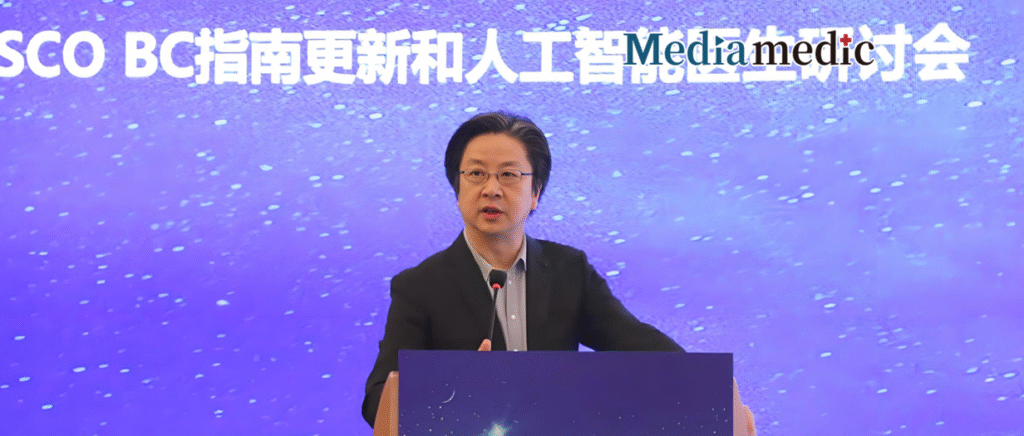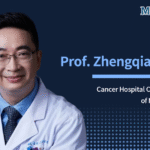
As one of the five initial professional guideline projects launched by the Chinese Society of Clinical Oncology (CSCO) in 2016, the CSCO Breast Cancer Guidelines (CSCO BC Guidelines) have become a cornerstone of breast cancer care in China. Since the publication of the first edition in 2017, the guidelines have undergone yearly updates, evolving in both content and format. Today, they are available in multiple versions—including Chinese and English editions, pocket guides, patient education materials, and AI-based platforms—earning broad recognition from Chinese clinicians and international oncology peers alike.Ahead of the 2025 CSCO BC Annual Meeting and the CSCO Guidelines Conference, Oncology Frontier invited Professor Zefei Jiang, Chair of the inaugural CSCO BC Guidelines Working Group and President-elect of the CSCO Council, to review the development journey and distinct features of the CSCO BC Guidelines.
Looking Back: The Birth of the First Edition
Oncology Frontier: In 2017, you led the development and release of the first CSCO BC Guidelines. Can you share the story behind that milestone?
Professor Zefei Jiang: From the beginning, CSCO has been dedicated to advancing standardized cancer care in China. Under the leadership of Professors Shukui Qin, Yilong Wu, Jun Ma, and Jin Li, it became clear that we could not rely solely on translating international guidelines. As China’s clinical research capabilities and domestic drug development rapidly progressed, there was a growing need to develop a framework suited to our healthcare realities.
The groundwork for the CSCO BC Guidelines began in April 2016 with the launch of the CSCO Guidelines Program, which prioritized five cancers: lung, colorectal, gastric, breast, and melanoma. After rigorous evidence collection, we held our first expert discussion in January 2017, bringing together leaders such as Academician Erwei Song, Professors Yongmei Yin, Jiong Wu, and myself, along with multidisciplinary specialists in medical oncology, surgery, radiation oncology, and pathology. We learned from our experience with the Chinese version of the NCCN guidelines, borrowed from international consensus methodologies, and incorporated Chinese-led research and data from global clinical trials.
By April 2017, the first edition of the CSCO BC Guidelines was officially released at the Beijing Breast Cancer Summit. While the initial version categorized treatments into basic and optional strategies in a relatively simplified manner, it was highly practical and well-received at the time. Professor Jin Li, then CSCO President, proposed designing a pocket-sized format to fit into a doctor’s white coat, which proved to be very popular.
Progress Today: Sophisticated, Accessible, and Widely Applied
Oncology Frontier: Over the past eight years, the guidelines have developed in both depth and format. What impact have they had on standardizing breast cancer care in China?
Professor Zefei Jiang: From the outset, I envisioned a guideline system that offered both Chinese and English versions, print and digital formats, academic and educational editions. Today, with strong support from colleagues across the country, we’ve achieved just that—including AI-powered versions and English-language publications in international journals like TBCR. We also collaborate with experts like Professor Yongmei Yin to regularly release the patient education editions.
This multidimensional platform has promoted the adoption and implementation of the guidelines across clinical practice, education, and research. It helps both doctors and patients stay informed about the latest treatment strategies and product availability. In recent years, we’ve incorporated Chinese-developed therapies such as pyrotinib, dalpiciclib, chidamide, and toripalimab, supported by high-quality domestic multicenter trials led by Academicians Binghe Xu and Zhimin Shao, and Professors Jiong Wu and Yongmei Yin. These drugs have reshaped practice, entered China’s national reimbursement list, and been integrated into our guidelines. International peers often express admiration for our dual inclusion of global and Chinese-origin therapies, noting the greater variety of treatment options available to our patients.
Balancing Global Innovation and Local Adaptation
Oncology Frontier: How do the CSCO BC Guidelines integrate global advances with China’s unique clinical realities?
Professor Zefei Jiang: That’s an essential question. Initially, many of us found NCCN guidelines refreshing and innovative. But over time, we noticed some discrepancies—they included outdated treatments or drugs not yet approved in China. With the rapid emergence of domestic innovations, the CSCO BC Guidelines have been able to fill this gap by integrating Chinese research and making necessary local adaptations.
Under the leadership of Academician Jinming Yu and the current CSCO Council, we’ve held several meetings with guideline editing teams to emphasize that our guidelines must balance scientific rigor with practicality and accessibility. We want them to serve as a reliable pocket guide for clinicians, reflecting both the best evidence and real-world applicability.
Furthermore, we encourage scholarly discussion around the guidelines. As clinical practice evolves and more evidence accumulates, we revise and refine our recommendations to better align with China’s clinical needs.
Looking Forward: Sharing China’s Voice with the World
Oncology Frontier: Chinese experts are now actively involved in developing global consensus guidelines such as St. Gallen, ESMO, and ABC. How do you see the CSCO BC Guidelines influencing global breast cancer care?
Professor Zefei Jiang: I’ve always believed we need our own guidelines—not just for China, but for patients in similar healthcare environments worldwide. Just like different cultures have distinct ways of enjoying a meal—chopsticks for hot pot, knives and forks for steak—our treatment strategies must reflect local realities.
For example, at this year’s St. Gallen Early Breast Cancer Conference, experts debated dropping pertuzumab postoperatively—not due to lack of efficacy but because of cost and reimbursement issues in Western countries. In contrast, China now has affordable originator drugs and widely accessible biosimilars, so we don’t face the same financial barriers.
Moreover, Chinese-developed therapies are often prioritized in our guidelines—not out of national bias, but because they are validated by high-quality Chinese research, reimbursed by the healthcare system, and clinically effective. In late-stage HER2+ metastatic breast cancer, we now offer a diverse landscape that includes trastuzumab and pertuzumab (monoclonal antibodies), pyrotinib (TKI), and T-DXd (ADC). Our guidelines reflect both international standards and China-specific solutions.
As Chinese pharmaceutical companies and treatment protocols expand globally, the CSCO BC Guidelines will become increasingly relevant beyond China, offering a valuable reference for other regions facing similar challenges.
CSCO’s core principle remains: identify real-world clinical problems and offer practical solutions rooted in Chinese research. Our mission is to ensure Chinese physicians use a guideline that truly belongs to them—and to let the world hear China’s clinical voice.


